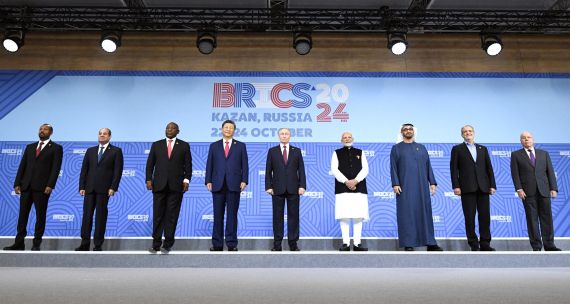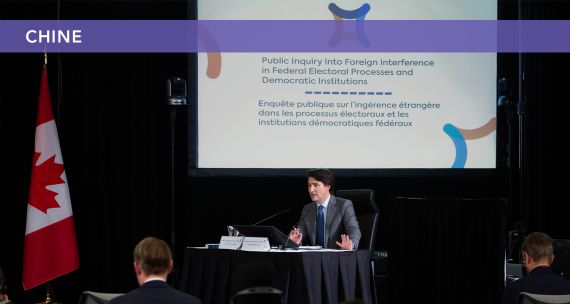Small and medium-sized Canadian businesses that are exporting to the U.S. suddenly have a lot to worry about. If U.S. President Donald Trump’s claims that he will enact sweeping tax reforms and renegotiate NAFTA are realized, our companies are likely to see their profits fall and demand for their products and services decline. As some 88 per cent of the total exports of Canadian small businesses and 96 per cent of the exports of medium-sized businesses go the U.S., the overall negative impact on jobs and the economy could be dramatic.
The Trudeau government is clearly concerned and seems to be adopting a two-pronged strategy. First, reaching out to the new U.S. administration with the hope that good relations will prevent Canada from being the victim of extreme U.S. policies. Second, exploring structures and mechanisms like free trade agreements that will help Canada gain greater access to markets beyond this continent.
Ensuring that Canadian small and medium-sized enterprises (SMEs, defined as companies having fewer than 500 employees) are successful in securing international markets is key to our country’s future growth. Asian markets have to be a prime target. Within just three years, 45 per cent of the world’s GDP and 42 per cent of the world’s total middle class consumption will come from Asia. But as any trade representative will tell you, getting Canadian SMEs into Asia is no easy task. The reasons are many: lack of infrastructure, inadequate information about market opportunities, unconducive trade policy and regulations, lack of access to financing, and uncompetitive products.
These barriers are not unique to Canadian companies, as a recent study by the Asia Pacific Foundation of Canada, “Learning from Global Innovative SME Export Assistance Programs,” demonstrates. The British, Indian, and Israeli governments, among others, have encountered similar problems and have developed innovative programs to help their companies internationalize. For example, in the U.K. over 5,000 companies have benefited from “The Export Communications Review” and “Postgraduates for International Business” programs that help them adapt their marketing materials and websites to both the language and cultural nuances of the foreign consumers they are targeting. The initiative taps domestic talent by connecting companies to foreign-language speaking students at British colleges and universities who provide services like preparing press releases, writing technical manuals, calling foreign agents and distributors, and dealing with foreign phone calls and emails, all at a subsidized rate.
The Indians have piloted a “Reverse Visit” program that stands the traditional trade mission model on its head. Instead of sending Indians to the target country, the Indian government encourages foreign buyers, trade representatives, and journalists to visit trade fairs, exhibitions, and companies in India by providing financial support.
In view of the immense opportunities opening up in India and China, the Israelis have created an “Indo-China Fund” that gives grants to small and medium-sized companies that want to establish a marketing presence in these countries. These grants help to pay for stationing a company employee in the overseas market, hiring local advisers, operating an office, and setting up a beta site for proof of local application of the technology/product in the target market.
The European Union has developed, perhaps, the most ambitious program. It has created a “Small and Medium-Sized Enterprise Centre” focused exclusively on helping companies do business in China. The EU has invested five million euros to set up a centre that provides knowledge (in-depth sector market reports, guidelines, and case studies); tailored export advice extending to legal and regulatory requirements; rules on market access and competitor and market analysis; assistance with due diligence; training programs adapted for the needs of individual companies; and hot-desks and work spaces in China.
In his mandate letters to the minister of international trade and to the minister of small business and tourism, Prime Minister Justin Trudeau called for the two ministers to “prepare and execute a new Canadian international trade strategy to ensure that programs and approaches are supportive of small and medium-sized enterprises,” specifically making it easier for them to get access to government funding and export-oriented supports. In addition to existing programs like the “Go Global Program,” a year ago the Liberal government launched the “CanExport Program” to help SMEs boost their sales abroad. But given changes in the international environment, this will not be enough.
As the global centre of economic gravity and opportunity shifts, the time is now for our government to focus on developing and implementing an SME strategy that focuses on helping our businesses get to Asian markets. We should learn from our friendly competitors and adopt new tools and innovative programs to build company capacity and assist with market access. We should also create an SME centre in Canada that provides companies with a one-stop shop for critical information, training, and networks to facilitate their entry into Asian markets.
This piece was first published by The Hill Times on February 8, 2017



